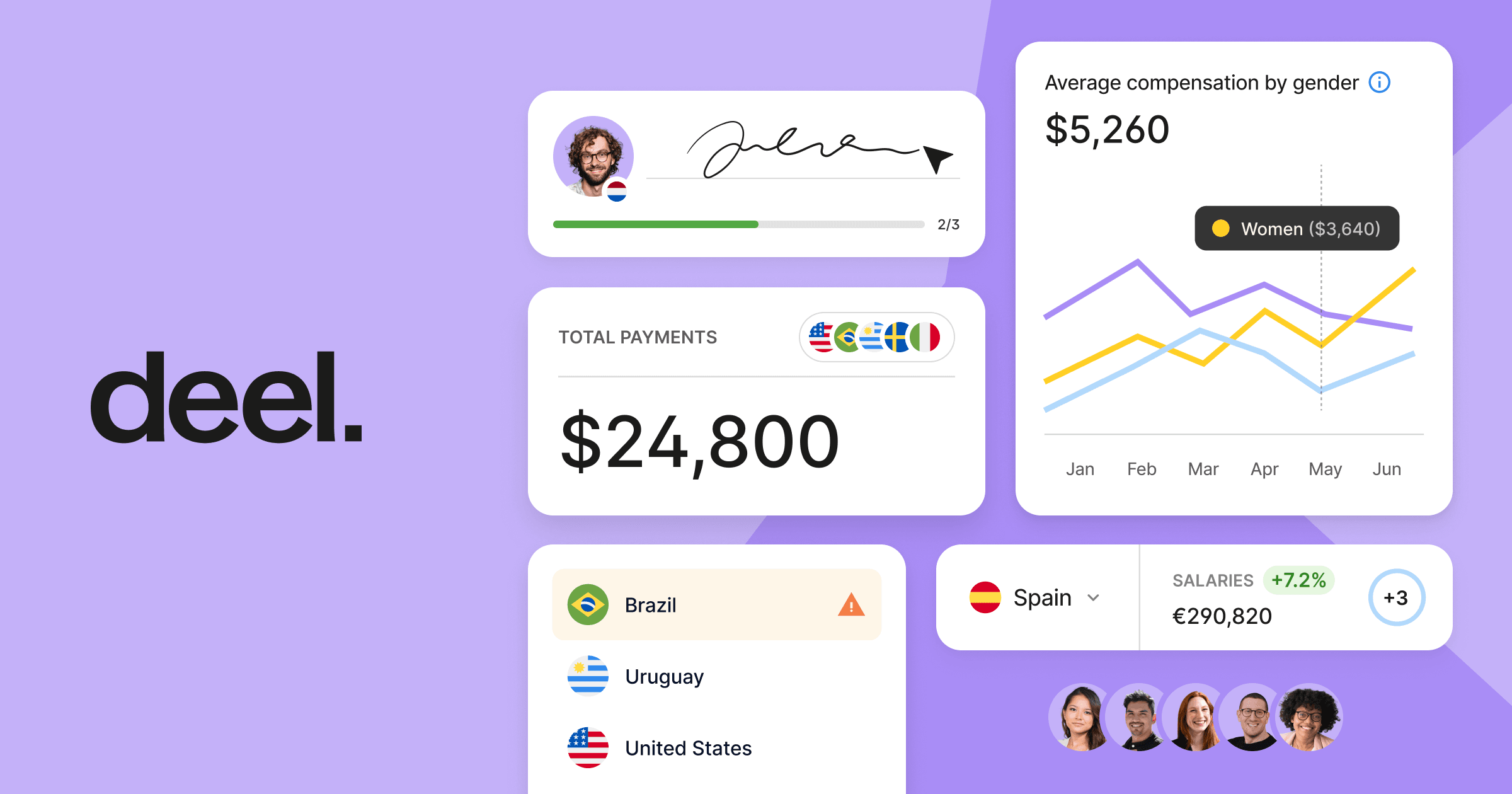Issue #20 • Oct 28, 2025

Welcome Back, Future of Work By HR Stacks!
We cut through the noise to bring you the most important updates in HR Tech, AI, and the changing world of work. From new AI colleagues clocking in to shifts in workforce strategy, here’s what you need to know this week.
If you haven’t yet, subscribe to the weekly HRstacks newsletter and keep us in your primary inbox.
In Today’s Edition:
🗓️ Four-Day Week: Productivity, Retention & Well-Being, What Trials Actually Show
🧭 AI at Work: Pressure, Pretenders, and the HR Fix
🧑💼 Leaders’ Fix: Six Simple Moves to Stop Burnout
📉 AI In HR: Adoption Soars, But Training Lags
👩💻 When HR Meets AI: Ethics Over Automation
⚙️ From Pilot To Practice: CIOs Prioritise AI Literacy and Governance
🤝 Deel’s AI Workforce: Meet the AI crew reshaping HR and payroll
✨ Helpful HR Tech Resources
Our List of top HR software solutions: 60+ options included.
A complete resource to find top Employer of Record solutions.
A list of top HR CRM solutions to manage your employees.
The 4-Day Workweek Revolution:

Large coordinated trials and company pilots repeatedly find that a well-designed four-day workweek can maintain or raise output while sharply improving employee wellbeing and retention.
High-profile experiments, from Microsoft Japan’s one-month trial to the UK’s 61-company pilot and recent multi-country studies, report consistent gains in productivity, big drops in burnout and resignations, and clearer hiring advantages when firms redesign work rather than simply chopping a day.
Key Takeaways:
Productivity can rise: Microsoft Japan recorded about a 40% jump in sales-per-employee during its August 2019 trial, linked to fewer meetings and sharper priorities.
Most UK pilots kept the model: In the UK 2022 trial, 92% of participating firms continued some form of the four-day schedule after the pilot. Revenue broadly held stable or rose modestly.
Resignations and turnover fell: Participating UK firms reported large drops in voluntary resignations during the pilot (attrition fell sharply), supporting stronger retention.
Wellbeing gains are large: A recent multi-country study found big wellbeing effects, roughly two-thirds fewer burnout reports, ~41% better self-rated mental health, and ~38% improved sleep among participants.
Design matters: Synthesis work and Autonomy’s analyses show typical productivity lifts around ~20% when firms pair shorter weeks with process redesign, manager coaching, and output metrics; otherwise, gains often disappear.
Why this matters:
pilots repeatedly show that time alone isn’t the lever: measurement, reduced low-value work, cross-training, and equitable coverage determine whether benefits persist.
Researchers also warn of self-selection and self-reporting limits and that most pilots skew toward white-collar roles, so broader roll-out needs careful tailoring.
1 in 6 Workers Pretend To Use AI At Work
A new Howdy.com survey of 1,007 U.S. full-time professionals finds mounting tension as AI becomes the workplace default: 75% of workers say they’re expected to use AI (officially or unofficially), 22% feel pressured to use it in situations they don’t understand, and 1 in 6 admit they sometimes pretend to be using AI rather than push back.
Workers report real upside, 84% say AI boosts productivity, and many note reduced burnout and better collaboration, but adoption is uneven.
Some employees (59%) use AI daily, yet 25% of those expected to use it received no training; a sizable minority feel overwhelmed or even report declines in self-worth tied to AI adoption.
Deloitte’s 2025 Human Capital Trends underscores the gap between AI’s potential and lived experience: organizations must reinvent learning and development, create tailored career pathways, and help managers translate AI into clear job-level skills so workers can safely and confidently augment their roles rather than merely simulate competence.
Deloitte recommends targeted upskilling, protected learning time, and rethinking employee value propositions for an AI era.
Key Takeaways
Pretender problem: 1 in 6 workers say they fake AI use, which signals social pressure and hidden capability risks for teams.
Productivity wins, but unevenly: Most report gains, yet many lack formal training and feel overwhelmed by fast change.
HR as bridge: Deloitte urges HR to provide tiered, role-specific AI fluency programs, protect learning time, and map AI skills into clear career pathways.
Organizational risk: Pretending to use AI creates quality and compliance gaps; employers should measure real capability, not assumed use
Leader’s Role In Combating Employee Burnout
Life coach Hemant Lawanghare lays out six leadership practices to build mentally healthy workplaces: recognise employees as whole people, practise emotional presence, adopt a coaching (not commanding) mindset, design systems that serve people rather than merely track output, reframe stress as a growth signal, and enable universal work-life balance measures like digital-detox zones and flexible schedules.
These steps aim to reduce exhaustion, cynicism, and reduced efficacy, the three core dimensions of occupational burnout.
Key Takeaways:
Burnout is an occupational syndrome: It stems from chronic, unmanaged workplace stress, marked by exhaustion, mental distance from work, and lower effectiveness, so solutions must target organisational design, not only individual resilience.
Micro-mindfulness works: Short practices (five-minute guided meditations, the 7-11 breathing technique) and quick check-ins help reset focus and reveal energy drains so leaders can rebalance workloads.
Emotional presence beats pressure: Two minutes of focused listening and regular appreciation improve morale; empathetic leadership measurably reduces burnout risk by changing the emotional climate.
Coach, don’t command: Framing tasks as development conversations, ending meetings with commitments, using open questions and peer coaching, builds trust and engagement, especially for younger workers.
Design systems for people: Use tech to support performance (not surveillance), run small continuous-improvement challenges, shorten meetings, and rework processes that create needless stress.
Policy matters for balance: Flexible hours, caregiver accommodations, and dedicated ‘detox’ spaces normalise recovery and reduce long-term strain. This is organisational prevention, not a perk.
Quick Action Steps For Leaders:
Institute a 5-minute mindfulness pause before daily standups and ask two short wellbeing questions during one-on-ones.
Run a pilot: one team tries flexible finish-times + a digital-detox day and reports back after two weeks.
Train managers in empathetic listening and coaching techniques, small investments here lower exhaustion and shrink turnover risk.
Leader’s Role In Combating Employee Burnout
Life coach Hemant Lawanghare lays out six leadership practices to build mentally healthy workplaces: recognise employees as whole people, practise emotional presence, adopt a coaching (not commanding) mindset, design systems that serve people rather than merely track output, reframe stress as a growth signal, and enable universal work-life balance measures like digital-detox zones and flexible schedules.
These steps aim to reduce exhaustion, cynicism, and reduced efficacy, the three core dimensions of occupational burnout.
Key Takeaways:
Burnout is an occupational syndrome: It stems from chronic, unmanaged workplace stress, marked by exhaustion, mental distance from work, and lower effectiveness, so solutions must target organisational design, not only individual resilience.
Micro-mindfulness works: Short practices (five-minute guided meditations, the 7-11 breathing technique) and quick check-ins help reset focus and reveal energy drains so leaders can rebalance workloads.
Emotional presence beats pressure: Two minutes of focused listening and regular appreciation improve morale; empathetic leadership measurably reduces burnout risk by changing the emotional climate.
Coach, don’t command: Framing tasks as development conversations, ending meetings with commitments, using open questions and peer coaching, builds trust and engagement, especially for younger workers.
Design systems for people: Use tech to support performance (not surveillance), run small continuous-improvement challenges, shorten meetings, and rework processes that create needless stress.
Policy matters for balance: Flexible hours, caregiver accommodations, and dedicated ‘detox’ spaces normalise recovery and reduce long-term strain. This is organisational prevention, not a perk.
Quick Action Steps For Leaders:
Institute a 5-minute mindfulness pause before daily standups and ask two short wellbeing questions during one-on-ones.
Run a pilot: one team tries flexible finish-times + a digital-detox day and reports back after two weeks.
Train managers in empathetic listening and coaching techniques, small investments here lower exhaustion and shrink turnover risk.
OTHER TRENDING NEWS
1. HR’s AI Moment: Where People + Algorithms Meet
HR is the new frontier for AI at work. 82% of HR professionals use AI for hiring, training, and feedback, yet only 30% received job-specific training, and two-thirds have adopted AI agents. Read More.
What for HR leaders: Prioritize hands-on, role-specific AI training, set clear policies to prevent bias and harmful mandates, and tie AI adoption to measurable strategic outcomes.
2. AI-Driven HR Tools: Promise, Pitfalls, And The People Factor
HR’s AI move needs a check-in. Salvatore Falletta at Vanderbilt University warns that while AI-driven tools like resume-screening bots and employee-sentiment trackers promise insight, many firms deploy them without fully weighing ethics, privacy, and human impact. Read More.
What for HR leaders: Treat AI as a support tool, not a decision-maker; insist on transparency, human-centered oversight, and clear ethical guardrails.
3. CIOs Are Pushing AI Forward, But Only With Training And Guardrails.
Leaders at Gartner’s symposium stated that firms are prioritizing clear use cases, secure in-house tools, and cross-functional councils as adoption grows; however, fewer than half of tech decision-makers have formal AI governance in place. Read More
What for HR leaders: Build role-based AI training, enable safe sandboxes for experimentation, and partner with IT/legal to enforce simple guardrails that protect data while boosting productivity.
4. AI’s Real Impact Depends On Leadership Choices
AI’s real impact depends on leadership choices: IBM CHRO Nickle LaMoreaux says AI can both spur growth and amplify human capability, IBM’s AskHR sped promotions by 75% and eliminated a 14.1% error rate, and IBM expects $4.5 billion in savings by the end of 2025. Read More.
What for HR leaders: Invest in continuous learning, redesign jobs to augment people, and reward skills over roles.
USEFUL TOOLS








